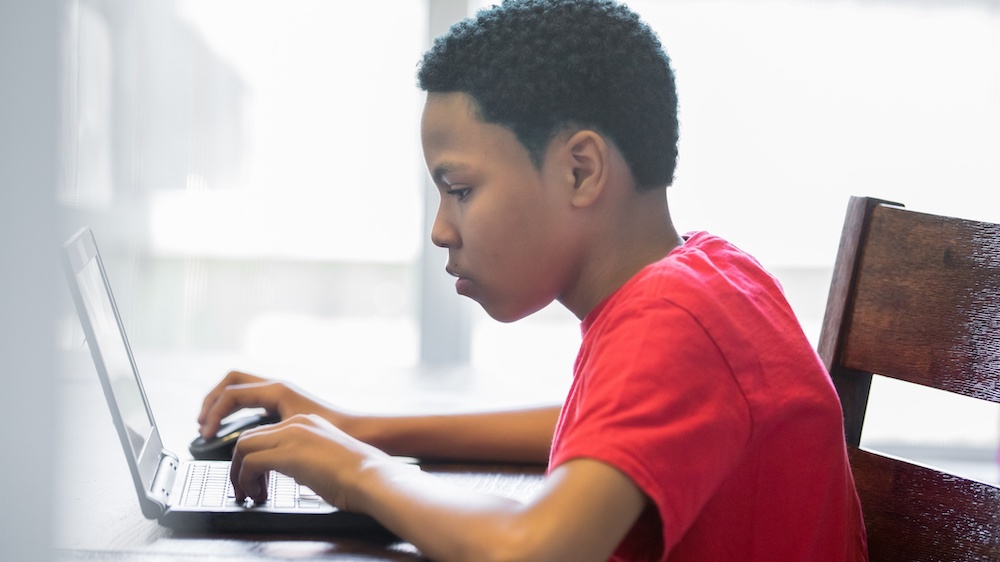If you’re interested in sharing your opinion on any cultural, political or personal topic, create an account here and check out our how-to post to learn more.
____
An internet connection is the most critical component of COVID-era schooling. The digital divide is now exposing and exacerbating our already immense opportunity gaps as nearly every school in the country turns to distance learning.
When students can’t get online at home, they can’t access their school. Those students who are already struggling are at risk of falling further behind now and when school resumes next fall.
The modern segregationists are not the George Wallaces of the world, but the companies who control the broadband. They stand as the modern poll taxers on the information superhighway, deciding who can get on and who can’t. A finger waving in the face of children, as they must now suffer actual exclusion from the virtual schoolhouse due to some old debt, or inability to pay.
We learned this the hard way in Oakland when we realized that the “free internet” promised to low-income families at the onset of the crisis didn’t apply to many of our families with the most need.
It turned out that Comcast had a unilateral policy of rejecting any applicants who had an outstanding debt older than one year. And guess what? A clause like that is going to eliminate a vast number of the families and students who are most in need.
So we created a petition urging Comcast Oakland to waive this burdensome restriction, and quickly garnered thousands of local signatures. A week later Comcast updated the policy, not just for Oakland, but for every market where they provide internet to low-income families.
But one company’s charitable actions — even one as large as Comcast — are not enough. If you look at the Federal Communication Commission’s (FCC) Keep Americans Connected pledge, there are more than 700 companies that have signed on. Just imagine how many of them have similar stipulations and restrictions that essentially bar the schoolhouse door.
Even as internet providers and political leaders will boast of their contributions to “keep America connected,” millions of underserved families are discovering a very different reality, as their applications to get online are rejected for one reason or another.
We are knowingly leaving millions of students sitting outside the digital schoolhouse, but we don’t have to. One executive action by the FCC could largely end this digital apartheid and force the hands of telecom companies to provide free internet to low-income families with no preconditions.
Unfortunately, the FCC’s inadequate efforts to protect low-income families fits a pattern of a lack of national leadership since the virus hit our shores. We’ve seen heroic moments from mayors, governors and business leaders. But this patchwork of inconsistent directives and mild incentives falls far short of meeting the needs of our most vulnerable families.
I’d love to see all of those companies step up the way Comcast did during this public health and educational crisis, but that is unlikely without some national pressure. And with the time it takes for each city’s residents to fight with each provider, the crisis will be over before most children see a digital classroom.
We could create petitions for all 700 telecom companies, but we really only need one national action to tell the FCC to demand internet access for all low-income families.
Educators are keenly aware of how urgent this is. Chiefs for Change, which represents many of our nation’s strongest state education leaders and superintendents, sent a letter to the FCC asking for this very change. Philadelphia’s former Outstanding Teacher of the Year noted that we are already seeing the disparities play out.
“In Trenton, New Jersey, where learning is now fully online, 40% of students have not logged on to virtual learning sites — not surprising since, by the district’s own estimates, nearly 20% of students do not have computer access at home.”
And it’s not just Trenton, it’s everywhere.
In the age of virtual schooling, lack of internet access is the new Jim Crow. And it’s easy to guess which students are on the wrong side of the digital tracks. It’s the same students who have historically been left behind in second-class schools with second-class resources and second-class expectations. They are exactly the students we should be working hardest to serve. And once again they are left behind.
They don’t have to be. The FCC can make a massive move in bridging the digital divide with the stroke of a pen. We must demand internet access for all low-income families. Every child deserves first-class entry into the digital schoolhouse, and together we can make that reality.
____
Dirk Tillotson, is the executive director of greatschoolvoices.org, and an activist with the nonprofit known as brightbeam. He lives in Oakland, California, where he advocates for practical solutions to the education challenges facing Oakland’s Black and Latinx community.
